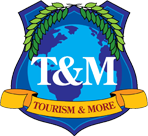Some New and Old Ideas in Tourism Marketing
January 2005
With the start of the new year, it is always a good idea to think about our marketing strategies. Not all new ideas are great and not all old ideas are bad. However, the trick is not to constantly develop new ideas, but rather to constantly judge the economic and social climate and make sure that one’s marketing matches the current reality. To help you match your marketing to current reality in your part of the world, Tourism Tidbits offers the following suggestions.
- Take the time to study not only current tourism trends, but also local, national, and international economic, social, ethical, and political trends. Our travel choices often reflect the interaction of our economic, political and social relationships. What may have been true for last year may be incorrect for next year. Additionally most of the tourism exporting nations now are experiencing a “graying” influence. Begin to consider how your marketing will impact people who in a few years will be in their 60s or 70s. Will your present marketing need to be undone over the course of the next ten years?
- Before you try to convince others to visit your locale/attraction, take the time to question why you would visit the locale. What makes you special? Would you honestly spend a day traveling to visit your locale? If the answer is yes, then emphasize what makes your locale or attraction, unique. If the answer is no, then ask what you need to do to make your attraction or locale worth the trip.
- Internal improvements and product development are often the best marketing that you can do. All too often we try to make our place into a destination rather than a center for a tourism activity. People go to a place because they can do something there that they desire to do. In most cases, it is the activity that is the attraction rather than the mere location.
- Sell your own personnel. All too often the people in our own community and the people who work for us undercut our message. For example, an employer may desire great customer service, but if his/her employees do not deliver, then visitor only knows what the visitor experiences. Never forget that the only people who are happy with an excuse are the people who make the excuse.
- Know what you do not have and what you are not. A major marketing mistake in tourism is trying to be too many things to too many segments of the tourism population. No location or activity is meant for everyone. It is important to know what you cannot deliver and then steer those people to other locations.
- Psychograhic models can be very helpful. A psychographic model tells us something about the psychology of our visitors. Are our visitors people who seek thrills or do they want a less risky environment? Are they the type of people who want to spend a great deal of money on a few purchases or do they prefer to buy souvenirs for all of their friends? How we determine these models helps each component of a tourism industry to become a total package that meets the needs of its customers.
- Tourism is an interrelated industry. Visitors rarely judge a location or an attraction on one or two components. Instead, the total tourism experience is often judged by the experience’s weakest link. Which parts of your industry need improvement? It is amazing how many errors or mistakes can be overcome with smiles, caring and a sense of personal warmth.
- While in our community, our visitors are our residents. Visitors see the community for what it is. If the community lacks greenery, has poor signage, needs repainting, or is filled with crime, those social ailments impact our visitors. No matter how good the attraction(s) may be, if the community is not pleasant to the senses, and its citizens do not care, then you are wasting your marketing dollars.
- Good security is good marketing. Police, TSA and Homeland security officials are an essential part of your tourism team. How these people do their job and what they understand about tourism is a key component in your marketing efforts. In the 21st century, two of the key predictive factors for a tourism economy will be its level of customer service and the level of tourism security that it can provide.
- Think through issues of globalization. In a world in which everyone is copying everyone else, remember that the reason people come to your locale or attraction is not what you offer that is similar, but for what you offer that is distinct. Make sure that you offer local products and experiences. Be unique and provide fun. Tourism should not be work but relaxation. That means that the more difficult we make it, the less accommodating we are, the less likely that people are going to return.
- Foreign tourists tend to outspend domestic tourists. When people travel long distances they tend to outspend people who may either return or have traveled a shorter distance. To take advantage of foreign tourism, however, requires special forms of marketing. For example, is signage posted in multiple languages? How easily can a menu be found in more than one language, are the police sensitive to multicultural and diversity issues? What health problems will the visitor from another country find in your locale?
- High tech can be a negative marketing tool. While technology is important, never permit your technology to destroy personal relationships. For example, if you have a special line set up to handle visitor problems, do not have that line force the consumer to pass through a telephone menu until he/she reaches a human being.



